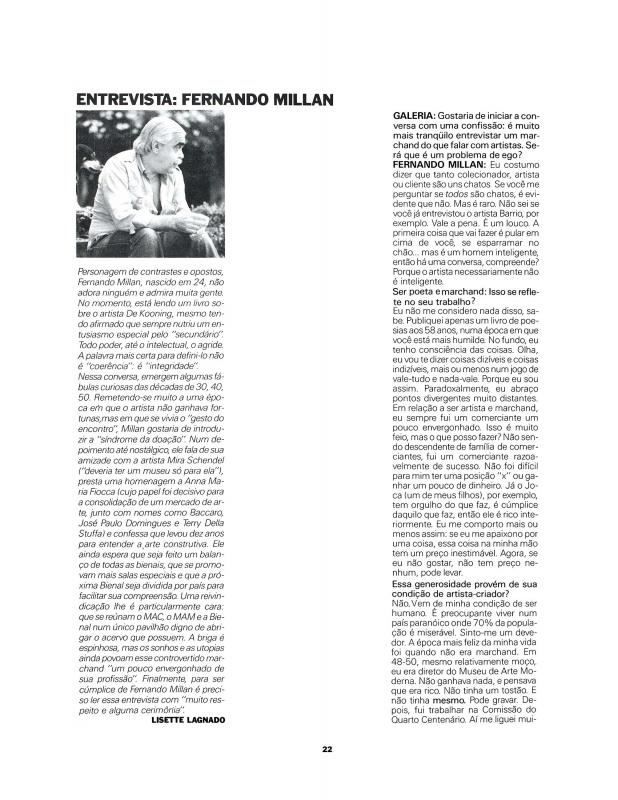When this interview was held, the gallery of Thomas Cohn was located in Rio de Janeiro (it would move to São Paulo in 1997). Looking back at the Rio art scene of the sixties, Cohn asserts that the most important galleries were the Petite Galerie, the gallery of Jean Boghici, Relevo, and Bonino (which had branches in Buenos Aires and in New York); starting in 1965, the galleries of Luiz Buarque de Holanda and Paulo Bittencourt were also important; Saramenha did not gain importance until the eighties—an intense period during which Cohn took part in meetings with gallerists geared at finding solutions to problems of infrastructure (the infrastructure of artistic production and of the art market)—and discussed starting a magazine. Regarding the São Paulo Biennial, Cohn understands that the purpose of the event is to inform the general public about what is happening in contemporary art. He openly criticizes approaches he deems overly broad, such as “Utopia vs. Reality”—the overriding theme of the nineteenth São Paulo Biennial (1987) organized by curator Sheila Leirner. Cohn does support Leirner for eschewing what he considers an outdated model based on national exhibitions.
For other texts by Lagnado, see “La instauración, entre la instalación y la performance” (ICAA digital archive doc. no. 1111435), “A bienal desmontada” (doc. no. 1111321), and “Desejo de servir” [Serving desire] (doc. no. 1111262). See also interviews with Sheila Leirner (doc. no. 1111294), Fernando Milan (doc. no. 1111293), and José Leonilson (doc. no. 1110768).






